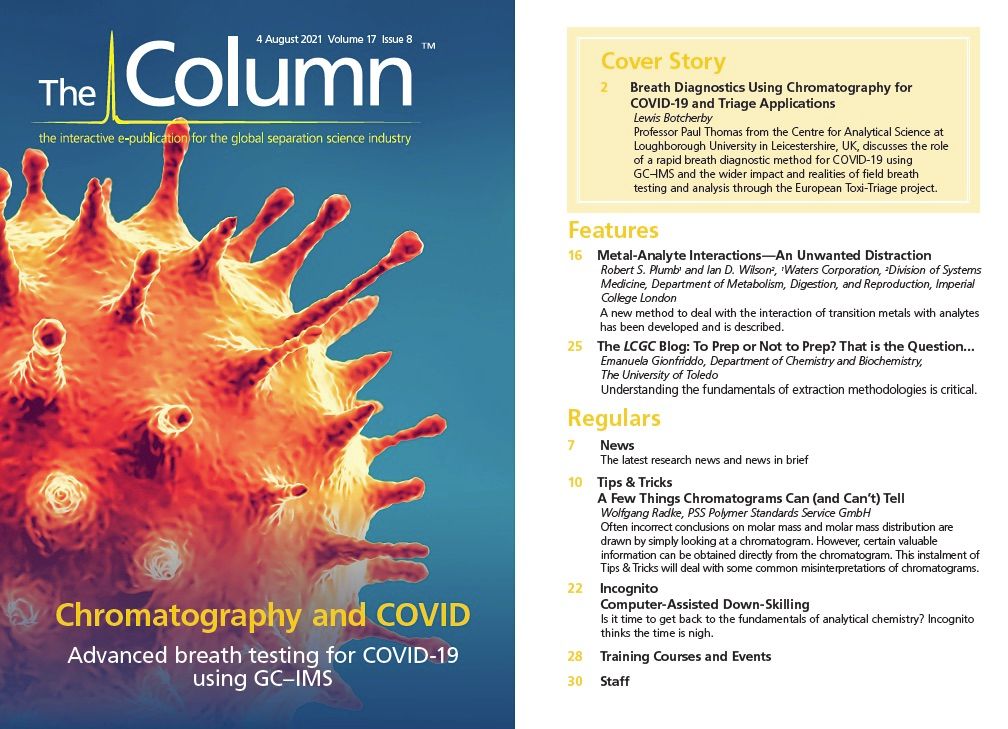Analysis of Environmental Contaminants Accumulation in Orcas Using LC–MS/MS
Emerging and legacy contaminants within the environment are a constant topic of research, with numerous studies investigating their impact on ecosystems and the animals that inhabit them. However, most studies focus on the animals that make up the base of the food chain, with top predators rarely being studied because of the difficulties involved in such research. As such there is a lack of data regarding the movement or presence of unregulated emerging and legacy contaminants in top predators.
Research conducted in Norway aimed to conduct the first screening of legacy and emerging contaminants in multiple tissues of killer whales (Orcinus orca) to shed light on the impact of persistent chemical contaminants in the wild (1). The research also included samples that were collected from a neonate to investigate whether contaminants are being transferred from mother to child (maternal transfer).
Orcas are considered to be sentinel species, providing advanced warning of risks to humans as they prey on animals from the higher trophic levels, such as seals. There are only a few studies to have investigated legacy pollutants, such as polychlorinated biphenyl (PCBs) (2,3), and only two to have investigated levels of perfluoroalkyl and polyfluoroalkyl substances (PFAS) (4,5)—intended to replace the previously banned PCBs. The forced reliance on opportunistic sampling from stranded whales limits research opportunities; furthermore, the data collected from such specimens always comes with a number of caveats that must be adjusted for.
Pollutant levels are regularly higher in stranded animals, as demonstrated by Jepson et al. (2), and as PCBs are associated with immune suppression, individuals with higher PCBs are more likely to die from infectious diseases and thereby get stranded. PCBs are also lipophilic and will concentrate in the blubber, highlighting the importance of sampling multiple tissue types. Decomposition and the unknown cause of death are also prominent issues with this type of sampling.
However, with little other options, researchers aimed to conduct a thorough screening of legacy and emerging contaminants in stranded killer whales found in Norway using liquid chromatography coupled to tandem mass spectrometry (LC–MS/MS) and a sample preparation process using graphitized nonporous carbon. In particular, they were investigating tissue partitioning of contaminants and their ability to transfer from mother to child during pregnancy.
Researchers screened for four PFAS and found pentabromotoluene (PBT) and hexabromobenzene (HBB) at low levels in the blubber of all individuals. Levels of PBT and HBB were twice as high in the blubber than the muscle for each individual, confirming the accumulation of such chemicals in lipid-rich tissues. These chemicals are replacements for banned substances and their long-term effects on ecosystems have yet to be fully examined and understood. However, their accumulation in tissues in a similar manner to previously banned substances is a worrying find.
Data collected from the neonate found that perfluoroalkyl substances and total mercury levels were lower in the infant than adults, which suggested an inefficient transfer of those substances from mother to child.
PCB levels in the blubber exceeded 9 µg/g lipid wt, which is the threshold for the onset of physiological effects in seven of the eight whales, including the neonate. The continued existence of these banned substances in the ecosystem is no surprise, and they represent a tremendous source of risk to the population growth of orcas around the world as they have been linked to the impairment of the immune and reproduction systems in the species (6).
The data collected by scientists highlights the worrying impact contaminants are having on marine ecosystems, providing further evidence of the damage of previously legal substances and hinting towards the similar impact their replacements are having.
References
- C. Andvik et al., Environ. Toxicol. Chem. 40(7), 1848–1858 (2021).
- P.D. Jepson et al., Sci. Rep. 6, 18573 (2016).
- J.-P. Desforges et al., Science 361, 1373–1376 (2018).
- W.A. Gebbink et al., Chemosphere 144, 2384–2391 (2016).
- Y. Fujii et al., Mar. Pollut. Bull. 136, 230–242 (2018).
- A.J. Hall et al., Environ. Pollut. 233, 407–418 (2018).

Silvia Radenkovic on Building Connections in the Scientific Community
April 11th 2025In the second part of our conversation with Silvia Radenkovic, she shares insights into her involvement in scientific organizations and offers advice for young scientists looking to engage more in scientific organizations.
Regulatory Deadlines and Supply Chain Challenges Take Center Stage in Nitrosamine Discussion
April 10th 2025During an LCGC International peer exchange, Aloka Srinivasan, Mayank Bhanti, and Amber Burch discussed the regulatory deadlines and supply chain challenges that come with nitrosamine analysis.
Removing Double-Stranded RNA Impurities Using Chromatography
April 8th 2025Researchers from Agency for Science, Technology and Research in Singapore recently published a review article exploring how chromatography can be used to remove double-stranded RNA impurities during mRNA therapeutics production.












